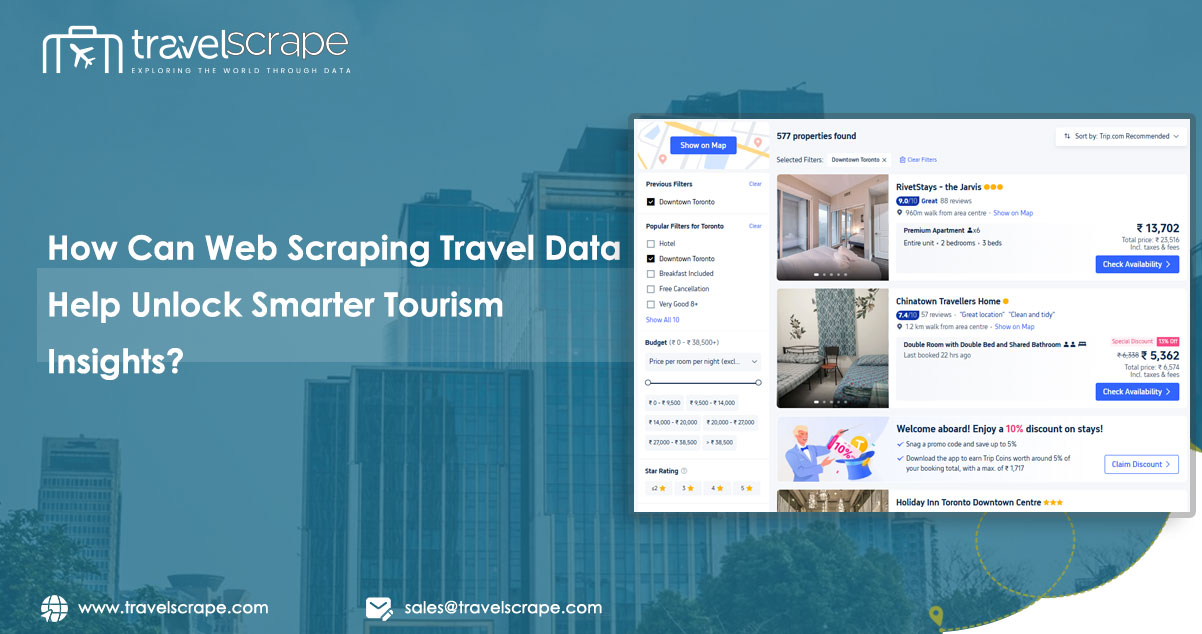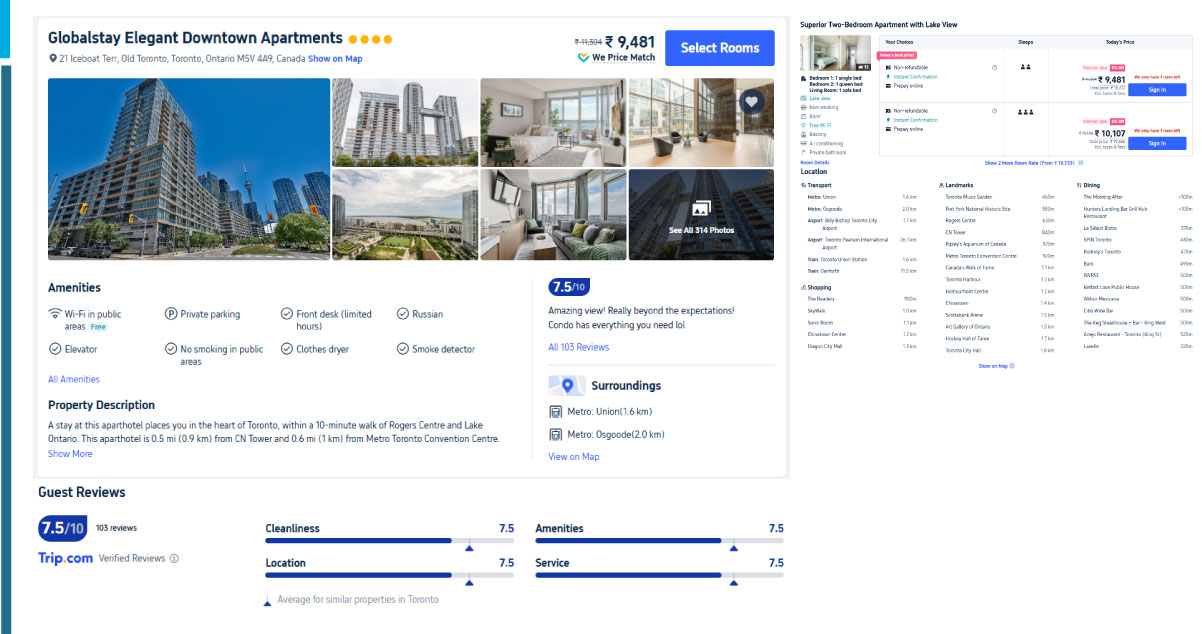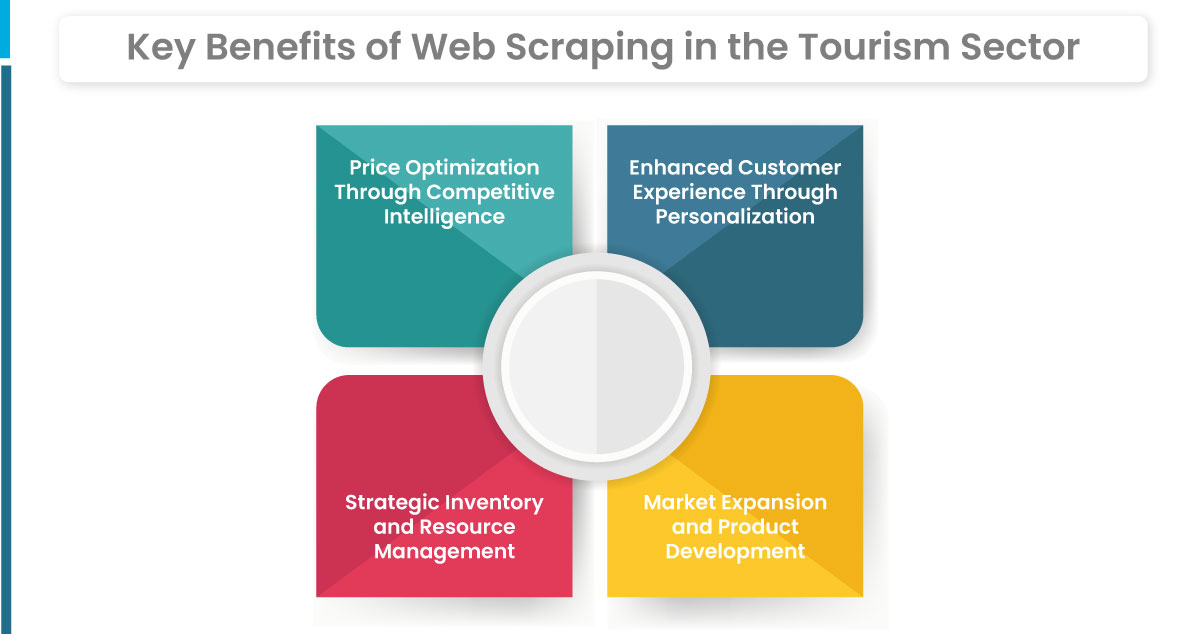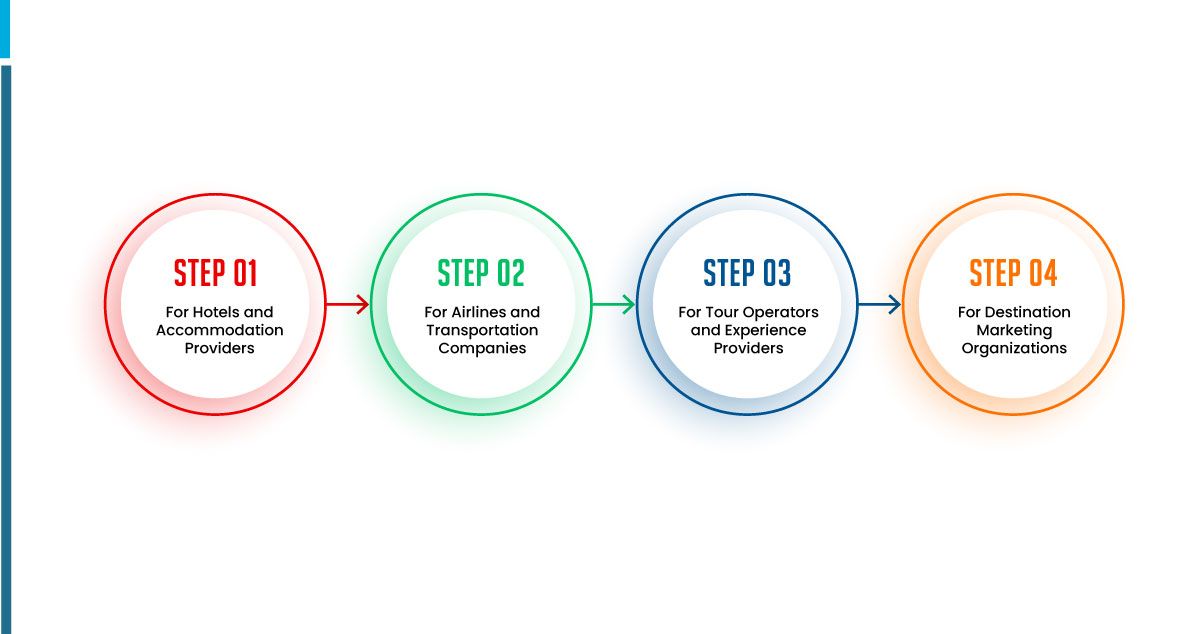How Can Web Scraping Travel Data Help Unlock Smarter Tourism Insights?

Introduction
In today’s data-driven world, the travel industry is inundated with overwhelming online information—from fluctuating flight prices and real-time hotel availability to customer reviews and evolving destination trends. While this abundance of data presents immense potential, the real challenge lies in effectively capturing, analyzing, and converting it into meaningful insights that drive decision-making. This is precisely where Web Scraping Travel Data proves to be a transformative solution, empowering tourism businesses with the competitive edge they need to thrive in a fast-evolving digital landscape.
Understanding the Revolution of Travel Data Collection

The travel and tourism industry has witnessed a profound shift driven by digital innovation. As millions of travelers turn to online platforms to plan, compare, and book their journeys, digital information is generated daily. What was once considered a technical niche, Travel Industry Data Extraction has become a cornerstone of competitive strategy. It empowers businesses to monitor competitor pricing, track availability patterns, and gain near real-time visibility into changing consumer preferences—all essential for thriving in today's dynamic market.
The Digital Goldmine of Travel Information
Modern travelers generate a wealth of online data as they plan, book, and share their journeys. This rich stream of digital footprints spans various platforms, including:
- Online Travel Agencies (OTAs) that showcase ever-changing price listings and promotional offers.
- Review sites overflowing with authentic user feedback and personal travel experiences.
- Airline websites leverage dynamic pricing models influenced by demand, location, and booking timing.
- Hotel booking platforms provide real-time data on availability, pricing, and room categories.
- Social media is where users actively discuss travel trends, share itineraries, and highlight emerging destinations.
Together, these platforms form a vast and valuable ecosystem of travel-related data. However, the sheer volume and fragmentation make it difficult to extract meaningful insights manually.
These touchpoints serve as a rich reservoir of insights—each offering a piece of the puzzle that can help decode traveler behavior and market dynamics. Businesses can systematically collect and structure this fragmented data at scale by leveraging Tourism Industry Web Scraping. The result is a unified, data-driven view that uncovers patterns, identifies opportunities, and powers more informed, agile decision-making.
Key Benefits of Web Scraping in the Tourism Sector

Tourism web scraping involves extracting large volumes of data from travel websites, OTAs, booking platforms, and review sites to gain actionable insights. This helps travel businesses make informed pricing, personalization, inventory, and market strategy decisions.
1. Price Optimization Through Competitive Intelligence
One of the most impactful uses of Web Scraping Travel Data is to drive real-time price optimization. By systematically tracking competitor rates across regions and platforms, tourism businesses gain the agility to:
- Fine-tune pricing strategies in response to market shifts.
- Identify optimal price points to maximize revenue.
- Detect recurring pricing trends and seasonal fluctuations.
- Curate competitively priced travel packages that appeal to price-sensitive segments.
Travel Pricing Intelligence extracted from structured data empowers hotels to adjust room rates based on competitor offerings, while tour operators can strategically bundle experiences to align with actual market demand. This ensures a profitable balance between competitive pricing and healthy margins.
2. Enhanced Customer Experience Through Personalization
Modern travelers expect curated, memorable journeys tailored to their preferences. By leveraging Data-Driven Travel Insights, businesses can unlock a deeper understanding of:
- Traveler behavior across various age groups, regions, and interests.
- Commonly booked destination pairings and custom itinerary patterns.
- Different customer segments value amenities and services.
- Early indicators of rising travel trends.
Analyzing large-scale reviews, search queries, and booking habits enables tourism brands to offer hyper-personalized travel experiences. Through Travel Review Data Intelligence, companies can convert subjective feedback into actionable insights, revealing hidden patterns in customer sentiment and evolving expectations.
3. Strategic Inventory and Resource Management
Efficient inventory and resource planning are key to profitability in sectors like hospitality and aviation. With Real-Time Travel Data Scraping, businesses gain critical foresight through:
- Precise demand forecasting using booking and search trends.
- Early identification of destination-specific demand spikes.
- Monitoring of competitor occupancy rates and capacity strategies.
- Recognition of new market opportunities before they mature.
This enables strategic deployment of inventory and staff. Hotels can fine-tune availability across platforms in response to live market conditions, while tour operators can scale offerings based on predictive demand analytics.
4. Market Expansion and Product Development
Growth in the tourism sector depends on timely, data-backed decisions. With OTA Data Scraping Benefits, travel businesses can uncover:
- Emerging destinations are gaining traction among travelers.
- Rapidly growing experience categories like ecotourism or cultural retreats.
- Underserved niches offering untapped potential.
- Evolving traveler demands across geographies.
How Web Scraping Works in the Travel Industry?
Travel Industry Web Scraping is the automated process of extracting data from online travel platforms, airline websites, review portals, and other digital sources to gain real-time, accurate, and scalable travel insights.
1. Data Sources and Collection Methods
In the travel industry, web scraping involves gathering valuable data from a diverse range of sources to help businesses make informed decisions:
- OTA Platforms: Scraping pricing, availability, and package details from leading online travel agencies (OTAs) like Booking.com, Expedia, Airbnb, and other booking platforms.
- Airline Websites: Monitoring dynamic fare changes, tracking route popularity, and assessing seat availability across major airlines.
- Review Aggregators: Collecting and analyzing customer feedback from platforms such as TripAdvisor, Google Reviews, and similar review-based sites.
- Destination Marketing Sites: Tracking promotions, events, and destination highlights to understand travel trends and preferences.
- Social Media: Collecting mentions, hashtags, and engagement metrics to gauge public sentiment about travel experiences.
Scraping Hotel And Flight Data demands advanced tools capable of navigating complex websites, handling dynamic content, and ensuring data accuracy across thousands of data points. The process includes:
- Automated Bots: These bots regularly visit target websites to capture the most current information.
- Parsing Technologies: These extract specific, relevant data from web pages by parsing HTML and JavaScript content.
- Data Cleaning Algorithms: These algorithms standardize and format the raw data to ensure consistency for analysis.
- Storage Solutions: These systems maintain historical data, allowing businesses to track and analyze trends.
2. Turning Raw Data into Strategic Intelligence
While data collection is the first step, the actual value lies in converting that data into actionable insights. Big Data In Travel Industry is harnessed through advanced analytical techniques, transforming raw data into valuable business intelligence:
- Pattern Recognition Algorithms: These algorithms identify pricing trends and fluctuations, helping businesses adjust their strategies accordingly.
- Sentiment Analysis Tools: These tools analyze customer reviews, offering insights into customer satisfaction and preferences.
- Demand Forecasting Models: These models predict booking windows, assisting travel providers in optimizing availability and pricing strategies.
- Competitive Positioning Analysis: These analyses evaluate market dynamics and reveal potential opportunities to improve market share.
These advanced analytical techniques unlock hidden stories within the data, transforming raw figures into meaningful intelligence that empowers decision-makers to act on valuable insights.
Real-World Applications of Travel Data Scraping

Travel data scraping provides a wealth of insights that can optimize decision-making and enhance competitiveness for businesses across the travel industry. Below are some of the key applications where travel data scraping can drive success:
1. For Hotels and Accommodation Providers
Hotels that utilize Web Scraping Travel Data can gain substantial advantages, particularly in these key areas:
- Dynamic pricing optimization: By monitoring competitor rates and market demand, hotels can adjust their pricing strategies in real-time, ensuring they remain competitive and maximize revenue.
- Reputation management: Aggregating and analyzing review sentiment allows hotels to understand customer feedback better, helping them improve their services and brand image.
- Amenity planning: With insights from competitor offerings and guest preferences, hotels can strategically plan their amenities to meet the demands of their target market.
- Distribution channel optimization: By analyzing performance metrics across various booking channels, hotels can ensure they effectively reach the right audience.
For example, a boutique hotel chain might discover through Travel Data Intelligence that their properties receive higher ratings for business amenities than leisure facilities. This insight could prompt the chain to improve leisure-oriented amenities like pools or spas to attract more weekend travelers.
2. For Airlines and Transportation Companies
Airlines greatly benefit from Real-Time Travel Data Scraping, which enhances various operational aspects:
- Route optimization: Airlines can identify high-demand routes based on search volume and competitive pricing, enabling more efficient route planning.
- Ancillary service development: Airlines can develop additional services, such as baggage options or in-flight entertainment, based on passenger preferences identified through data analysis.
- Yield management: Comprehensive market pricing data helps airlines maximize their revenue by optimizing ticket prices and flight capacity.
- Schedule planning: Airlines can adapt their flight schedules to emerging travel patterns, ensuring they offer the right routes at the correct times.
For instance, a regional airline might utilize Data-Driven Travel Insights to pinpoint underserved routes with growing search interest, allowing them to launch new flights ahead of competitors.
3. For Tour Operators and Experience Providers
Tour operators can make data-driven decisions using Tourism Industry Web Scraping in several ways:
- Developing unique experiences: Tour companies can design unique experiences that cater to evolving customer preferences by tracking trending interests.
- Optimizing pricing: Market positioning insights allow operators to adjust their pricing models for tours and activities, ensuring they remain competitive.
- Targeted marketing: By identifying the most receptive audience segments, operators can focus their marketing efforts on where they will have the most significant impact.
- Itinerary adjustments: Tour companies can tweak their itineraries in response to changing destination popularity, ensuring they always offer the most attractive options.
For example, a walking tour company might use Travel Review Data Intelligence to discover that specific historical sites receive more positive reviews during particular times of day. This allows them to optimize their schedules and offer tours when customer satisfaction is highest.
4. For Destination Marketing Organizations
Tourism boards and destination marketing organizations (DMOs) rely heavily on the Importance Of Travel Data Analytics to drive decisions:
- Measure marketing campaign impact: Travel data analytics help DMOs assess the effectiveness of their marketing campaigns by tracking shifts in search interest and traveler sentiment.
- Identify source markets: By analyzing traveler behavior, DMOs can pinpoint regions or demographics showing increased interest in their destination, enabling them to tailor outreach efforts.
- Benchmark accommodation pricing: Comparing accommodation rates to competing destinations allows DMOs to understand their market positioning and adjust promotional strategies accordingly.
- Track sentiment changes: Monitoring traveler sentiment before and after infrastructure improvements or major events provides valuable insights into the impact of these changes on destination appeal.
A regional tourism board, for instance, may use Travel Pricing Intelligence to demonstrate that their destination offers better value than competing locations. This data can help persuade local businesses to invest in new tourism facilities, boosting the destination's long-term viability and competitiveness.
How Travel Scrape Can Help You?
We recognize the distinct challenges and opportunities in the ever-evolving tourism data landscape. Our Custom Travel Data Solutions are meticulously crafted to cater to the specific data intelligence requirements of innovative travel companies:
- Tailored Data Collection: We design specialized strategies to capture data from your key markets and competitors, ensuring your business stays ahead.
- Advanced Analytics: Our sophisticated analytical tools convert raw data into valuable insights, driving informed decision-making.
- Intuitive Dashboards: Our easy-to-use dashboards present complex data in a clear and actionable way for decision-makers at all levels.
- Frequent Intelligence Updates: Stay ahead with regular briefings that highlight emerging trends, opportunities, and potential risks in your market.
- Compliance-First Approach: We ensure our data practices adhere to all relevant legal and ethical standards, providing peace of mind.
We collaborate with hotels, airlines, tour operators, and destination marketing organizations to create data strategies that foster competitive advantage. By blending Travel Industry Data Extraction expertise with tourism sector knowledge, we deliver data and valuable insights that address your business needs.
Our clients often experience significant improvements in key performance metrics, such as enhanced pricing strategies, optimized inventory use, and more focused marketing campaigns within three months of implementation.
Conclusion
In today’s highly competitive environment, Web Scraping Travel Data has become crucial for tourism businesses that aim to make informed, strategic decisions. The ability to effectively gather, analyze, and act on comprehensive market intelligence sets industry leaders apart from the competition. Travel Aggregators who leverage these capabilities can spot trends early, fine-tune their operations precisely, and create exceptional experiences that truly engage their target audience.
Looking ahead, the significance of data-driven decision-making will only grow. By investing in robust Travel Industry Web Scraping capabilities now, travel businesses are positioning themselves for long-term success in an ever-changing marketplace.
Is your business ready to embrace the future with cutting-edge Travel Data Intelligence? Contact Travel Scrape today for a consultation and discover how our tailor-made data solutions can unlock fresh growth opportunities for your tourism business.
.webp)
.webp)